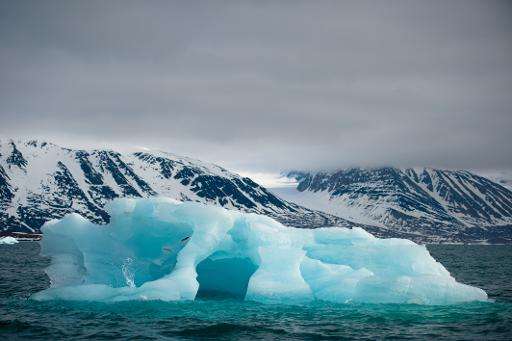G7 leaders have called for global emissions cuts of 40-70 percent by the middle of the century compared to 2010 levels
Climate scientists gathered Tuesday in Paris, five months before the deadline for a historic carbon-curbing pact, to show that a radical shift to sustainable energy can still limit disastrous planet warming.
On current trends, humanity would spend the estimated safe budget of Earth-warming greenhouse gases within 20-25 years, the experts said, and urged a quick and dramatic transformation of the energy sector.
"The world is at a critical crossroads," UN Secretary-General Ban Ki-moon said in a message read to the gathering of nearly 2,000 academics from around the world.
Nations have committed to limiting average global warming to two degrees Celsius (3.6 degrees Fahrenheit) over pre-Industrial Revolution levels, but research suggested the world could be heading for double that or more, he said.
Analysis of emissions curbs pledged by nations to date to underpin the new climate rescue pact, showed the combined effort will "not be sufficient to meet the 2 degree target," said Ban.
"Clearly strong action still needs to be taken."
The four-day international science huddle opened Tuesday in the French capital, which will also host a November 30-December 11 UN climate conference for 195 nations to thrash out the long-awaited agreement.
The gathering of academics from nearly 100 countries will review the most up-to-date science on risks and solutions, including technological advances, to feed into the Paris pact.
Scientists stressed the task was a difficult one, but not impossible.
Nations have committed to limiting average global warming to two degrees Celsius (3.6 degrees Fahrenheit) over pre-Industrial Revolution levels
"At current emissions, we have a time window of about 20 to 25 years until that budget (of emissions consistent with 2 C) is exhausted," said Thomas Stocker, a professor of climate physics at Bern University.
"There's only a third of the emission budget that is remaining, and... we are using it up at an unprecedented velocity. What we see today are the highest emissions in history."
The science gathering comes eight months after the UN's Intergovernmental Panel on Climate Change (IPCC) brought out a report, widely considered the bible of climate science, which warned that the 2 C window was fast closing.
Window is 'tight'
Emissions will have to drop 40-70 percent between 2010 and 2050, and to zero by 2100.
The 2 C target "has become extremely ambitious," said Stocker, who helped compile the IPCC report, but "substantial reductions over the next few decades can reduce climate risks.
"That necessitates a transformation in the energy sector"—from emissions intensive coal, gas and oil to more sustainable sources like solar and wind.
World Meteorological Organization (WMO) head Michel Jarraud painted a picture of rising seas and more extreme storms and drought in a warmer world.
"It is still possible to change course and limit climate change to a reasonable level," he told the conference. "But time is short."
Even at 2C warmer, the world will be a more hostile place.
Though it is difficult to attribute specific weather events to climate change, scientists say the world is already 0.8 C warmer and the global mean sea level 19 centimetres (7.6 inches) higher than in 1901.
"Overall about half of all (plant and animal) species have changed where they live, changing their distribution to track the shifting climate," Camille Parmesan, from the marine institute at Plymouth University, told the conference.
But there was some good news too.
The International Energy Agency said in March that global emissions, the most prevalent greenhouse gas, stalled for the first time in 40 years in 2014.
The 2 C window, "is very tight", said Michael Grubb, a climate policy expert with the University College London, "but had last year's data been different, it would have been even tighter."
© 2015 AFP

























